Mardi Gras Tips for First Timers
Mardi Gras is my favorite time of year. I adore the week-long celebration– full of costumes, delicious King Cake, endless drinks…and with varying levels of debauchery, depending on your style and inhibitions. If you’re celebrating Fat Tuesday in New Orleans this year, here are a few tips! Get to the party early: Mardi Gras isn’t just one day of revelry. The Mardi Gras season begins on Twelfth Night, and it only builds from there: in the weeks preceding Fat Tuesday, there’s more and more parades and events that ultimately crescendos the weekend before. Some of the best Krewes roll the Thursday and Friday nights preceding Mardi Gras. Muses is a favorite among locals, and my personal favorite is Krewe d’Etat, which is a parade full of political satire — on a local and national level. krewe |kroo| noun. A private social club that sponsors balls, parades, etc., as part of the Mardi Gras festivities. Then there’s the Super Krewes: Endymion, Bacchaus, and Orpheus. These three are known for their high-tech floats, intricate design, and elaborate costumes — as a result, they draw enormous crowds. Get there early! Fun fact: Mardi Gras is privately funded by the members of the Krewes. The dues to join a Krewe are hefty, but it covers security, barricades, street sweepers, street closures, permits — and of course, all the “throws”. throws |THros| noun. Items one can catch at a Mardi Gras parade, including but not limited to: plastic beads, speciality beads, doubloons, cups, toys, light-up trinkets at night parades, plus Krewe-specific items (Coconuts from Zulu, Muses throws specialty shoes, toilet plungers at Tucks). Track the parades with WDSU’s Parade Tracker. I LOVE THIS APP. It provides you with all the information you need: Schedules, maps of parade routes, and even the chance of rain. Best of all, once the Krewe rolls, it tracks where on the route the parade is and keeps you updated if the parade is stalled somewhere on the route. The app really comes in handy when you’ve been waiting for thirty minutes after Proteus, wondering where the heck Orpheus is. WWL has a parade tracker app as well — but I prefer WDSU’s interface. BYOTP. Public toilets on parade routes are scarce, and toilet paper is even scarcer. Closer to downtown and the Quarter, hotels require their guests to wear bracelets in order to gain access to their lobby (and bathroom facilities). In Uptown, public restrooms are nearly impossible to find. The city created a new ordinance this year banning private port-a-johns on public property — making toilets even more of a scavenger hunt. There are port-a-johns on most major intersections, although their cleanliness leave a lot to be desired. Always have a few extra tissues (and hand sanitizer!) in your pocket. Get...
Favorite Destinations of 2013
My wish for 2013 was to live the year out of a suitcase. When January 1st rolled around, I had zero plans of putting that into motion aside from a weekend jaunt to Memphis and two weeks in New Orleans for work and celebrating Mardi Gras. Then, in mid-February, it all began: I was swept off by a job to the West Coast, where I spent a grueling five months working and living out of a suitcase while doing my best to enjoy the adventure. Afterwards, I had a healthy bank account and weeks of unemployment on the horizon — I seized the opportunity and finally took off on the Motherland Tour. I was lucky enough to explore what became some of my all-time favorite destinations. And some (most) of these I still haven’t shared with you — so, here’s a little recap! 5. Kiev, Ukraine Kiev had three strikes against it: Cold, windy, gray, and in AUGUST! I would normally run to get on the next train out of town, but Kiev still won me over, and almost instantaneously. When I drove into the city and was greeted by the gigantic Motherland Statue and the Lavra — two landmarks that are so unique and unfamiliar to American eyes, it didn’t feel real. I really embraced Kiev for the stark contrast to the United States and the challenges that came along with it. It was also my first introduction to a Soviet city and I loved the wide roads, expansive parks, and dozens of monuments. As a fan of places with history and architecture older than the 1700s, Kiev has a lot to offer, especially regarding the early years of Christianity (legends suggest the apostle Andrew visited Kiev in 55 AD). There are quirks and challenges around every corner; curiosities and interactions with strangers that force you to think. Everything was in a different alphabet, and few people spoke English. It was the first time in my travels where I was in another world from the moment I arrived — and I loved it. 4. Bremen, Germany My roommate and I hosted two Germans back in 2010 — long before I ever planned the Motherland Tour and had done any research or had even looked at a map of Germany. Our surfers were from a place I’d never heard of: Bremen. They offered an open-ended invitation, but assured us it wasn’t worth any special effort to visit. A year later, I began plotting my Motherland Tour route and pouring over maps. I learned that Bremerhaven was the departure point where my grandparents left Europe for a new life in the United States....
Quintessential Ukraine: Tales from the Overnight Train
When I took my first overnight train from Kiev to Lviv, I was naive–maybe even stupid. No one in my cabin spoke English; I definitely spoke no Ukrainian. I didn’t understand why the bathroom door was locked when the train was stopped. In the morning, I was confused why the train attendant popped into our cabin four times within an hour and chirped at us before we finally rolled in to the Lviv train station at 6am. The cabin was sweltering hot, and I never got the tea that I had paid for. It had been an experience, but nothing I was keen on reliving. I promised I’d take the day train for the return journey. That had been a month ago. I was still riding high off the thrill of finding family in the most epic way imaginable. I’d spent the last week meeting/visiting several cousins all across Western Ukraine. The Motherland Tour had been a much larger success than I’d dreamed. I didn’t want to leave Lviv, but my roommate was meeting me in Germany that week, and she likely would’ve been irritated if I bailed in a brief Facebook message, “Sorry, I’m staying in Ukraine…but have fun alone in Germany!” (and rightfully so). I stalled as long as possible to visit with my delightful cousins (26 years is a lot of time to make up!), until I had no choice but to take the overnight train. I had to get back to Kiev. The Ukrainian Train Adventure I entered the cabin of my train in Lviv, where an older gentleman was curled up on one of the upper cots. He immediately sat up, and began chattering away in Ukrainian. At this point, I’d had a whopping three weeks of Ukrainian language study under my belt. Definitely not enough for conversation, but I could catch one or two words per sentence. I’d also become quite good at reading hand gestures and facial expressions. (If you ever need a teammate for a game of charades with Ukrainians, I’m your girl!) Through a combination of my limited Ukrainian and body language-reading abilities, I learned the gentleman was a professor from the city of Ivano-Frankivsk; and for about half an hour, he sat and spoke to me in slow, clear Ukrainian. Through a combination of charades, my bad Ukrainian, and Google Translate, I told him that I worked in television production and was here visiting family. He was delighted, and explained his daughter had a similar career. He eagerly asked me the English word for a few things — which I was surprised to be able to translate. I wondered if I was the first American he’d...
A Walk Through the Ukrainian Village of Rozvadiv
Rozvadiv is an unassuming village in West Ukraine, located 45 minutes south of Lviv and home to only 5,000. This could be considered “Quintessential Ukraine”: endless fields, livestock roaming through the neighborhoods — and the only sound is the hum of the river Dniester and rumbling of the occasional train. I enjoyed my weeks in Kiev and Lviv immensely, but I didn’t feel I truly experienced Ukraine until I took a walk through Rozvadiv. When Hitler marched Eastward through West Ukraine, Rozvadiv didn’t remain untouched. Nazi soldiers passed through, kidnapping teenage boys — one of whom was my grandfather. It has been left largely as it was after the USSR collapsed, save a few exceptions: a few more automobiles and satellite dishes; plus a fresh coat of paint on the main cathedral. The cathedral could be described a Rozvadiv’s the main attraction, which is impossible to miss from almost any place in the village. Since the crumbling of communism, finding employment and maintaining survival in these villages has been tricky. Most homes have beautiful, elaborate gardens and some form of livestock. I was surprised to learn that while several have cell phones and electricity, few have indoor plumbing. Rozvadiv has its own school, government office, and a pair of product shops, but no options in the way of eateries or restaurants. (When I went out to lunch with my family, we went to the neighboring town of Mykolaiv, which has three times the population and a larger array of businesses and employment opportunities). Perhaps it was Soviet influence, but Ukraine loves their larger-than-life monuments — and Rozvadiv is no exception. I first saw this dramatic angel statue in my grandfather’s 1992 video of Ukraine, and for one reason or another, he had edited into the Lviv portion of the video. I assumed it was in Lviv, and that it would be one of the main tourist attractions. I asked every local I met, “Where is the giant angel statue?!”, only to be answered with bewilderment. I eventually gave up, figuring the statue had been demolished. When we turned the corner of the main street in Rozvadiv, there it was. I gasped with surprise. It was even larger in person than I’d imagined. The River Dniester The Dniester is one of Ukraine’s main waterways, and it was also a place of joyous childhood memories for my grandfather– happier days that his years of torment under the Nazi regime couldn’t erase. I took the soil in my hands, and imagined my grandfather fishing, swimming, horseplaying here — and how everything he loved was taken from him in a moment. And then I think...
When Life is Better than a Story (Finding My Family in Ukraine)
My grandfather came from a large family. He was one of seven children, and over the years and with additions of new generations, the family count had grown to 50 people (and perhaps more!). I saw a few pictures of my cousins, but it wasn’t until my grandfather went back to Ukraine in 1992 and documented his own adventure that my mother and I could see into the lives of our family, hear their voices and grasp how different Ukraine was from the US. How do you completely lose touch with an entire family in the digital revolution? My grandfather passed away in 2003, and it was the beginning of a very difficult time for my little family in Virginia. I won’t go into specifics, but there were health problems that ensnared us. Thinking, writing, talking in Ukrainian was too much for my mother. Address books got misplaced, phone numbers changed as landlines faded away in favor of cell phones. When I first started making plans to go on the Motherland adventure over two years ago, I consulted the Internet to glean any information about my Ukrainian family. I was able to find very little evidence of the surname of my grandfather, “Hryca”. My mom wasn’t sure, but she was under the impression that in the 20 years since my grandfather had visited Ukraine, Ukrainians had to adapt to life without the USSR. As a result, we suspected, everyone had scattered to larger cities. There was no one I could call or write to explain I was coming. I’d have to do it on my own. Going Anyway Compelled is the only way I can describe it. I had to go to Ukraine. I had no idea what I would find, but whatever it was, it was waiting for me. One of the best tips I’ve been given about travel is to make loose plans, but set no expectations. Not knowing if finding my family would be feasible, the purpose of my trip became “preserve the heritage and legacy”, as that seemed attainable. I wanted to one day be able to tell my kids about Ukraine– and not just from stories that I’d heard, but from my own experiences. I knew my grandfather’s heart was in West Ukraine. I wanted to pick up a few words of the language, walk the streets my grandfather walked, and go to the village where he was raised before he was kidnapped as a teenager. I had an old address, which might be enough to see if I had any relatives left in the village — but nothing else. I realized the level of difficulty of my quest...
London, 2006: The Trip That Started It All
You don’t just wake up one morning and decide you’re going to travel the world on your own; something or somewhere has to ignite the spark. It was the summer of 2006. I had been living in Nashville and attending Belmont University for just over a year, and was finally starting to gain confidence as an independent adult away from the nest. A friend of mine, Marion, decided to study abroad in London for the fall semester. If it was OK, I said, I’d like to come visit. She enthusiastically agreed, and I’m not sure if either one of us believed I would actually follow through. But thanks to incredibly affordable airfare and a little movie called loveactually, I booked a roundtrip ticket from Nashville to London for a quick 5-day jaunt in October that coincided with my university’s fall break. It would be the trip that would start it all. For some reason, my flight to London–even at the bargain bin price of $450– had about 5 people on it. (I’ve yet to go on another transcontinental flight that is anything less than stuffed to the brim!). One of the other four people on the plane was a guy in graduate school sitting in the row behind me. I think he correctly pegged me as the frightened, inexperienced child that I was, and took me under his wing. Frazzled by the magnitude of everything and bleary-eyed by lack of sleep, I had no idea how to get to the Central Station from Gatwick. A veteran of travel, he led me to the ticket machine, helped me buy the ticket, and we took the tube together. The train rolled through the outer rim of London, past countryside and neighborhoods. As I stole my first glances of the United Kingdom, he told me about his travels, and showed me the well-decorated pages of his thick American passport. He pointed at a particularly ornate stamp. “This is my favorite,” he told me, “this is Egypt’s stamp.” I was in awe. He asked me where else I’d traveled, and I found myself embarrassed to admit, “just the US.” Desperate to contribute something worldly to the conversation, I told him of my desire to go to Greece. “Here’s something interesting,” he said, “there are pieces of the Parthenon, the Parthenon Marbles, that at the British Museum that they took from Greece a few centuries ago. So, if you go to both the Acropolis and the British Museum, you will have seen the Parthenon in it’s entirety.” I’m not sure if it’s because I live in Nashville that has its own full-sized Parthenon replica, but that fascinated me. In...


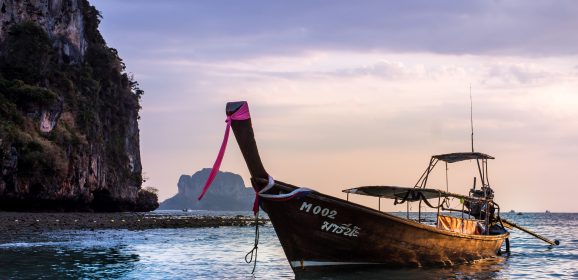

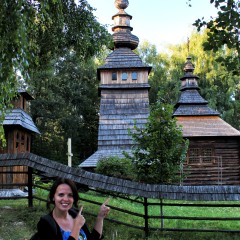
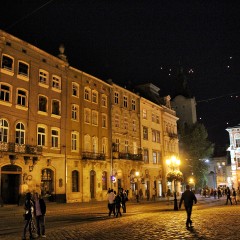
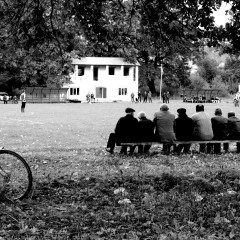
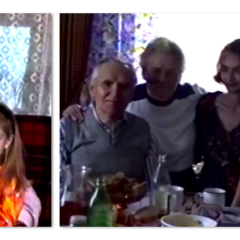
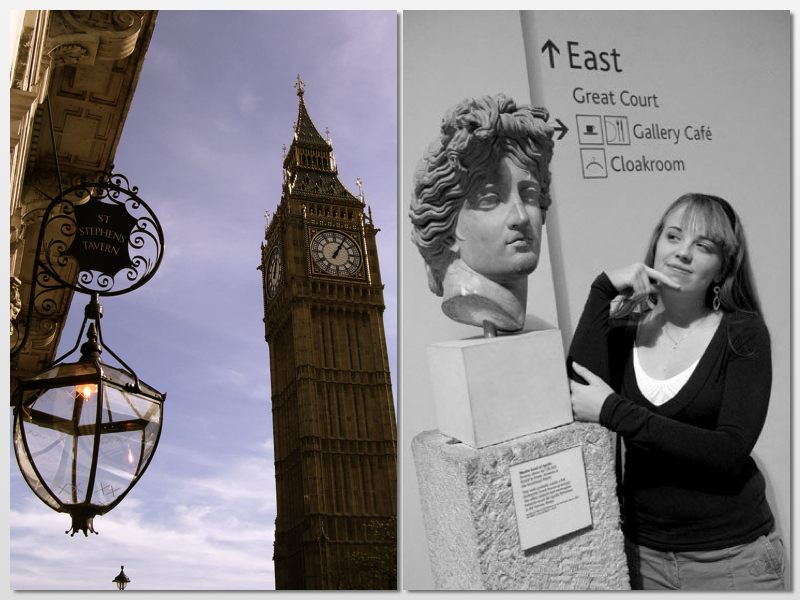
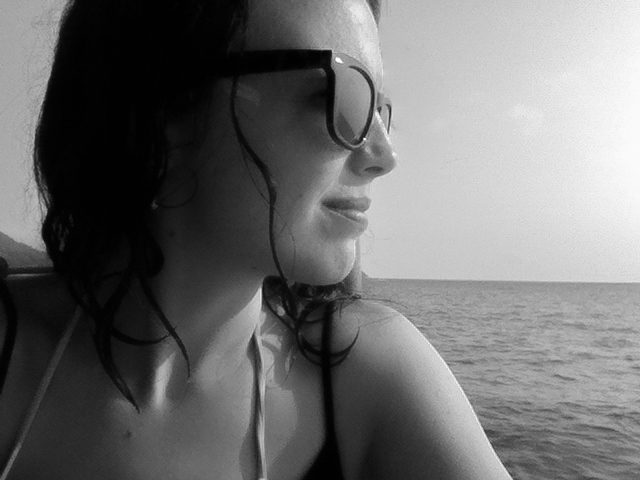 I'm Laryssa, and when I'm not working in film or television, I'm attempting to travel -- or I'm here, providing resources for working in film or travel.
I'm Laryssa, and when I'm not working in film or television, I'm attempting to travel -- or I'm here, providing resources for working in film or travel. 









